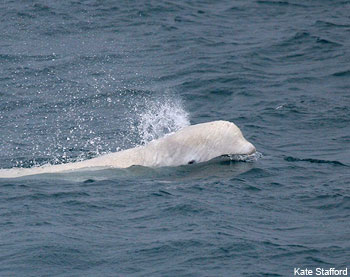Protecting Life in the Arctic
 America's Arctic, one of the most beautiful and extreme places on Earth, includes parts of Alaska and the Beaufort, Chukchi, and Bering seas. For thousands of years, inhabitants have depended on the region's natural bounty. Here, one of the world's last relatively untouched marine ecosystems provides habitat for species such as walrus, ice seals, polar bears, and bowhead whales.
America's Arctic, one of the most beautiful and extreme places on Earth, includes parts of Alaska and the Beaufort, Chukchi, and Bering seas. For thousands of years, inhabitants have depended on the region's natural bounty. Here, one of the world's last relatively untouched marine ecosystems provides habitat for species such as walrus, ice seals, polar bears, and bowhead whales.
Life in the Arctic has been shaped for centuries by the ability to adapt to this land of perpetual ice and snow. But recently, the Arctic has begun warming at twice the rate of the rest of the planet, fundamentally altering natural systems and the human communities that depend on them. Retreating sea ice is not only restructuring Arctic ecosystems, but it is also yielding new industrial access for commercial fishing, offshore energy, and commercial shipping, all on a scale never before seen.
Pew's Arctic program promotes science- and community-based conservation that reduces potential risks to the U.S. Arctic Ocean from climate change and industrial development.
The program works specifically to:
- Secure permanent protection for Bristol Bay from offshore oil and gas development.
- Implement integrated Arctic management practices to account for all users in the U.S. Arctic.
- Secure a five-year Arctic offshore oil and gas development plan that explicitly designates and protects important subsistence and ecological areas in the Chukchi and Beaufort seas.
- Ensure that the Department of the Interior develops and implements Arctic-specific drilling safety and oil spill prevention and response standards.
- Advocate for a longterm integrated research and monitoring plan to guide decisions on whether, where, when, and how offshore oil and gas drilling can take place.
- Develop and implement science-based shipping safety and conservation measures in the Bering Strait and Aleutian Islands to ensure the protection of vulnerable habitat, migratory marine mammals, and subsistence resources.











